By Michael D. Hull
On a bright spring day in 1944, a Luftwaffe Focke-Wulf 190 fighter encountered a formation of U.S. Eighth Air Force B-17 Flying Fortress heavy bombers over the city of Magdeburg in east central Germany.
When the FW-190 went after one of the bombers, it was set upon by four escorting North American P-51 Mustang fighters. The German pilot, Maj. Gen. Adolf Galland, was wise enough not to attempt a dogfight with the fast, deadly American planes, so he dived and tried to escape. But the Mustangs stayed with him, their tracer shells zipping around his plane.
So, Galland pulled a trick that had worked for him in previous actions—he fired his machine guns. The resulting streams of smoke wafted back toward the P-51s, giving their pilots the illusion of rear-firing guns. They were showered with spent cartridges and links, and it appeared that hits were being scored on the American fighters. The ruse succeeded, and the four Mustangs broke into a right-hand climbing turn, allowing Galland to escape.
Galland, a veteran of the Spanish Civil War, the invasion of Poland, and the Battle of Britain, was innovative as well as being a skilled and tenacious pilot. When American daylight raids over occupied Europe intensified in 1944, he had his FW-190s fitted with armor plating and two extra cannon. The “Sturmgruppen” fighters, each weighing up to five tons, attacked the Flying Fortress and Consolidated B-24 Liberator bomber groups while lighter Luftwaffe fighters took on the P-51 escorts.
Galland, who headed the Luftwaffe’s fighter arm from 1941 to 1945, was a top-scoring German ace and one of the few to survive World War II. He was able to do so because he never underestimated his foes and always kept a few tricks up his sleeve. While Galland displayed a killer instinct in the air, he was a gentleman on the ground and chivalrous to his foes.
A Young “Dolfo” Learns to Fly
Adolf Joseph Ferdinand Galland was born on Tuesday, March 19, 1912, at Westerholt, Westphalia, in west central Germany. He was one of three sons of a well-to-do estate bailiff of Huguenot descent. After attending school in Hindenburg (now Zabrze, Poland), Adolf, like many boys of his age, became fascinated with aviation.
The Versailles Treaty of 1919 restricted powered flight to a privileged few in post-World War I Germany, so gliding became a fast-growing national sport. When the Gelsenkirchen Gliding Club set up a camp on the Borkenberge, a hill near Adolf’s home, the youth began spending many hours watching the gliders being catapulted into the air. He longed to fly, so his father allowed him to go to nearby Gelsenkirchen twice a week to take the club’s theoretical courses.
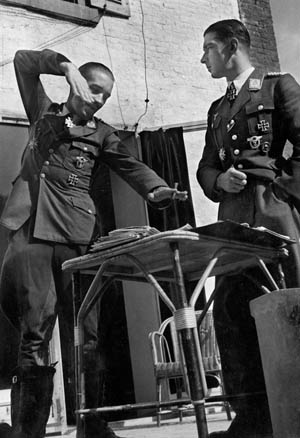
The result was that young Adolf failed his school examinations. But, “with the help of God and my schoolmates,” he managed to stay abreast of his studies without having to sacrifice his precious weekends on the windswept Borkenberge. There, Adolf and other youngsters toiled like slaves dragging gliders back up the hill after each takeoff. They watched the fliers enviously until their own time would come.
Adolf, nicknamed “Dolfo,” finally got his chance in 1929 at the age of 17. He squeezed himself into the tiny cockpit of a sleek glider and felt himself being shot into the air like an arrow from a bowstring. He almost smashed the glider on landing. But he learned quickly and won his A-license badge—a white gull on a blue background. Adolf proved to be a natural aviator. He won several contests and was an expert glider pilot by the age of 19.
In 1932, he was one of only 20 candidates out of 4,000 selected to attend the Lufthansa Flying School at Brunswick in Lower Saxony. That year, he joined Lufthansa, the German national airline, as a commercial pilot. National Socialism was sweeping the country, and, as Adolf said later, “the flame of unselfish enthusiasm burnt bright and pure in us boys.” The flying school was run by Colonel Alfred Keller, a World War I pilot. His tales of bombing raids over London inspired Adolf to dream of becoming a military flier.
Germany had been forbidden under the Versailles Treaty to build military aircraft, but plans to create an independent air force had been secretly under way since 1923. Under the direction of World War I airman Erhard Milch, a small air force was developed within the framework of Lufthansa. Adolf was sent to Italy in 1932 for a covert course in service training and completed advanced flight instruction at Grottaglie. When he returned home in the autumn of 1933, he was “an almost perfectly trained fighter pilot.”
The Rearmament of Germany: Giving Teeth to the Luftwaffe
After Adolf Hitler and his National Socialist party came to power in 1933, Germany began to rearm openly. Galland went to the Civil Airline Pilots Training School at Schleissheim in Bavaria in October 1934. He was ostensibly a civilian, but the school was transformed into the country’s first fighter pilot training center. The energetic, ambitious young Galland soon became an instructor, wearing “an odd kind of uniform” with eagles embroidered on the lapel to indicate a civilian’s military rank. After being assigned to the 10th Infantry Regiment and the Dresden War Academy, he was commissioned a lieutenant on January 1, 1935.
The following month, he entered the Luftwaffe for still secret combat training. Compulsory military service and the existence of the German Air Force were announced by Hitler the following month. Corpulent Hermann Göring, a World War I fighter ace, was revealed as the Luftwaffe’s commander-in-chief.
Galland was posted to the fledgling Air Force’s first fighter wing, named for Manfred von Richthofen, the legendary Red Baron of World War I. The young man showed great promise as a fighter pilot with leadership qualities, but he had a puckish streak and could not resist stunting. One day in 1935, he flew too low and too slow and crashed. He had to be dragged from the wreckage with his nose broken and his left eye damaged. On another occasion, his plane hit a lamp post. His medical report read, “Unfit for flying,” but a friendly officer helped him to memorize the eye chart letters, and he was passed for duty.
The Luftwaffe’s Lessons from Spain
As Germany built up its armed forces to war pitch during the uneasy 1930s, Galland, a dark, mustached man with a fondness for brandy, cigars, and beautiful women, itched for action. He finally got his chance with the outbreak of the Spanish Civil War in July 1936. He volunteered for General Hugo Sperrle’s Condor Legion, which flew for Generalissimo Francisco Franco’s Nationalist forces against the Spanish Republicans. After being given command of a squadron in the Jagdgeschwader 88 fighter group, Galland arrived in Spain in May 1937.
The bitter three-year conflict was a valuable training ground for the Luftwaffe. Tactics adopted with the new and highly effective Messerschmitt Me-109 fighter in Spain were to prove invaluable in World War II; other German aircraft types also achieved a measure of success in Franco’s service. These included the Heinkel He-111 and Dornier Do-17 bombers, and the notorious Junkers Ju-87 Stuka dive bomber. But other German aircraft deployed, such as the sluggish Henschel Hs-123 dive bomber and Heinkel He-51 fighter, both outmoded biplanes, were outclassed by the enemy’s Russian-built Polikarpov I-15 Chato biplane and Polikarpov I-16 Rata monoplane. So the Henschels and Heinkels were used for ground support.
They proved effective, but Lieutenant Galland was not a happy warrior in Spain. His squadron was equipped with the biplanes, and he flew 300 sorties in Henschels and Heinkels. He was ordered to avoid encounters with the superior Chatos and Ratas, and the aerial victories he had dreamed of would have to wait for the imminent world war. Galland did not relish ground support flying. In one low-level sortie, his Heinkel was hit by rifle fire. A bullet went through a wing, another buried itself in the instrument panel, and a third pierced one of his boots. Although he chafed at his ground support duties, Galland helped to pioneer tactics that would enable Nazi Germany to roll across Western Europe 21/2 years later.
Like his Luftwaffe superiors and peers, he regarded the Spanish war as a valuable experience. But there were times when Galland, a chivalrous man, became disillusioned. He and his comrades had been “depressed” by a devastating air raid on Guernica in northern Spain. Late on the afternoon of Monday, April 26, 1937, a market day, Heinkel bombers and fighters bombed and strafed the historic Basque town, killing an estimated 1,654 people and wounding 889. George L. Steer of the London Times reported, “The town was a horrible sight, flaming from end to end.”
The raid, a grim portent of the fate of many European cities and towns, shocked the world. Galland called the bombing accidental and attributed it to inexperienced crews. He said that the raid “had to be regarded as a failure, since one of our first principles was to destroy the enemy ruthlessly, but, if possible, to spare the civilians.”
The Luftwaffe’s War in Poland

While tensions mounted across Europe in the summer of 1939, Galland was posted to the German-Polish frontier, where Wehrmacht armored, artillery, and infantry divisions were massing for the invasion that would open World War II. Galland was promoted to captain and assigned to the Luftwaffe’s II Gruppe Lehrgeschwader 2, but he was still frustrated because he faced more ground support duty.
The Luftwaffe fighter, bomber, and dive bomber squadrons assigned to support the invasion of Poland were ready before first light on Friday, September 1, 1939. “It was still dark on the morning of September 1 as we climbed into our cockpits,” Galland reported. “Blue flames spurted from the exhausts of our engines as they warmed up, and at the first signs of dawn the fireworks started.” Panzer groups and infantry columns pushed across the frontier, backed by Luftwaffe planes bombing and strafing Polish cities, towns, and installations.
During the three-week campaign against the gallant but overwhelmed Poles, Galland flew 50 uneventful strafing sorties in Henschel Hs-123 dive bombers in support of the panzer spearheads and was awarded the Iron Cross Second Class. He had had his fill of ground support action and badgered his superiors for a transfer to fighters. Promoted to captain, he served as a training officer before his persistence paid off in the winter of 1939-1940, and he was transferred to the 27th Fighter Group as adjutant. Based at the River Rhine city of Krefeld, JG 27 was equipped with the speedy but short-range Messerschmitt Me-109E, the principal Luftwaffe fighter until 1941.
The Rise of a Luftwaffe Ace
Galland was just in time for the May 10 onset of the great blitzkrieg offensive, when German forces pushed through the Low Countries and France to the English Channel coast. He wasted no time in fulfilling his dream and distinguished himself as an aggressive fighter pilot and skilled wing leader. He chalked up his first aerial kill against a Belgian Hawker Hurricane fighter on May 12, and there was no holding him back.
He downed three more Belgian Hurricanes in one day over Liege, and two weeks later won his first victory over a Royal Air Force Spitfire above Dunkirk, where the battered British Expeditionary Force was extricating itself from the beaches. In the following week, Galland downed two French Morane fighters, and by June 3 he had scored 12 kills.
Battling Over the Skies of Britain
Soon, Galland faced his biggest challenge—the Battle of Britain. History’s first major air battle raged over southeastern England in the summer of 1940 as RAF Fighter Command Supermarine Spitfires and Hurricanes challenged Luftwaffe bomber squadrons whose objective was to soften up British defenses before Hitler’s planned cross-Channel invasion, Operation Sea Lion. Promoted to major and leading Me-109s of Jagdgeschwader 26’s Gruppe III, Galland entered the fray in July.
Of his first action in the Battle of Britain, Galland reported, “We got into a heavy scrap with Spitfires screening a convoy [in the English Channel].” In a “frenzy of twisting and turning,” Galland picked out a Spitfire as his target. He tailed it and gave it a long machine-gun burst. The British fighter went down almost vertically. Galland followed it until the pilot bailed out, but his parachute failed to open and he plunged into the sea.
Based on a grassy airfield at Caffiers, near the French coast, Galland flew two to three sorties a day, escorting bombers and dueling with British fighters. After chalking up 17 victories in the skies over England, he was awarded the Knight’s Cross. Six weeks later, with his score now 40, he became the third Luftwaffe pilot to win the Oak Leaves to his Knight’s Cross.
The Challenges of Battling the RAF
The daring Galland thrived on single combat. “The fighter must seek battle in the air,” he believed, echoing the words of his hero, Richthofen, 20 years earlier. “Fighter pilots have to rove … in any way they like, and when they spot the enemy, they attack. Anything else is rubbish.” Fearless to the point of recklessness, Galland earned the admiration of both his comrades and the RAF fliers who tangled with him.
But challenging RAF squadrons that had been alerted by radar was a “very bitter” surprise to Galland and his comrades. He continued to rack up kills, but found that the odds “were not too rosy” for the Luftwaffe fighter pilots. With their limited range, he reported, the Me-109s were shackled in escort duties with slow-moving bombers, which “attracted Hurricanes and Spitfires as honey attracts flies.” Escort deprived the Luftwaffe jäger (hunter) units of the initiative.
“In battle we had to rely on our own human eyes,” said Galland. “The British fighter pilots could depend on the radar eye, which was far more reliable and had a longer range. When we made contact with the enemy, our briefings were already three hours old, the British only as many seconds old—the time it took to assess the latest position by means of radar to the transmission of attacking orders from Fighter Control to the already airborne force.”
Although the RAF’s Spitfires and Hurricanes suffered from drawbacks in speed and rate of climb compared with Me-109s, Galland was nevertheless disturbed. “The short range of the Me-109 became more and more of a disadvantage,” he reported. “During a single sortie, my group lost 12 fighter planes, not by enemy action but simply because after two hours’ flying time, the bombers we were escorting had not yet reached the mainland on their return journey.”
“I Should Like an Outfit of Spitfires”
During the fateful summer of 1940 when Western freedom hung in the balance, the casual, lighthearted pilots of RAF Fighter Command exacted a heavy price in Luftwaffe men and machines, and the German Jägers soon developed a grudging respect for their foes. Back at their base, Galland and his men looked at one another gravely. “We were no longer in doubt that the RAF would prove a formidable opponent,” the ace said. The mounting losses were demoralizing, and the carefree, hard-drinking Jägers grew bitter and despondent. “We saw one comrade after another vanish from our ranks,” Galland told his younger brother, Wilhelm, who served with an antiaircraft battery on the French coast.
Major Galland felt even worse when he was summoned to Berlin for a briefing of Luftwaffe commanders called by Reichsmarshal Göring. Watching contented German civilians quaffing beer and strolling along the Kurfurstendamm, he was angered by the “I-could-not-care-less attitude and the general lack of interest in the war.” It seemed to Galland as if “the whole burden of the war rested on a few hundred German fighter pilots on the Channel coast.”
And no consolation was forthcoming from the usually jovial Göring. When he visited the Jäger squadrons in France at the height of the Battle of Britain in September 1940, he reproached the fighter pilots and demanded closer and more rigid protection for his Heinkel and Dornier bombers. Galland told him, “The Me-109 is not so suitable for purely defensive purposes as the Spitfire.”
When the time came for him to depart, Göring became more amiable and asked the Jäger officers what he could do for them. General Werner Mölders, a high-ranking ace, the brilliant commander of Jägdgeschwader 51, and eventual general of fighters, asked for more powerful aero engines. Göring turned to Galland, saying, “And you?” Without hesitation, he replied, “I should like an outfit of Spitfires for my Jägdgeschwader.” Speechless, the reichsmarshal stormed off growling.
Three Crash Landings
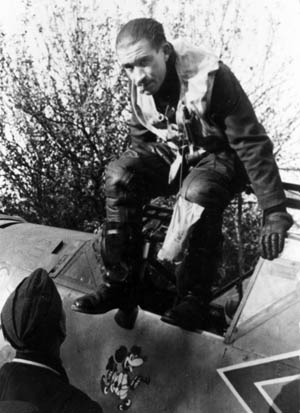
Luftwaffe, Adolf Galland emerges from the cockpit of his Messerschmitt Me-109 fighter after landing at a forward airfield in France near the coast of the English Channel in 1940.
Because of his success as a group leader in the Battle of Britain, Galland was promoted to lieutenant colonel. He and his Me-109 crews were transferred to the Brest area on the French west coast early in 1941, but they returned to the Pas de Calais that summer. The seemingly indestructible JG 26 commander had a remarkable experience on June 21. After shooting down two RAF Bristol Blenheim light bombers, Galland was forced to crash-land when he was set upon by a pair of Spitfires. Picked up by a liaison plane, he returned to his base, ate a hurried lunch, and took off again. That afternoon, he took revenge on a Spitfire but was downed again. He injured his ankle when he bailed out and was taken to a hospital by French peasants.
He was soon back in action. With his score of victories now 70, Galland became the first pilot to win the Swords to his Knight’s Cross. Like many successful fliers, Galland was lucky. During one sortie over southeastern England, he realized that the fuel tanks of his Me-109 were almost dry. He reluctantly considered landing in Kent but decided to take a chance on crossing the English Channel. He just made it over and crash-landed on the beach at Cap Gris Nez.
Chivalry Among Pilots
Galland was concerned about his pilots’ welfare, and they were devoted to him. And, while he gave no quarter in aerial combat, he clung to the chivalrous spirit of 1914-1918 that still existed among fighter pilots.
Early in August 1941, Group Captain Douglas Bader, the legless Battle of Britain ace, was captured after colliding with an enemy plane over France. After sending his Horch staff car to fetch the celebrated RAF flier from the hospital in St.-Omer, Colonel Galland and his officers chatted and sipped tea with him during a lavish reception. At Bader’s request, Galland agreed to arrange for the RAF to air drop his spare pair of tin legs.
The two aces discussed the relative merits of British and German fighters, and Galland allowed Bader to sit in the cockpit of his Me-109. The smiling Briton asked if he could take off and “do just one circle over the airfield.” Galland replied, “If I grant your wish, I’m afraid you’ll escape and I should be forced to chase after you. Now that we have met, we don’t want to shoot at each other again, do we?” Bader laughed, and the pair changed the subject. After a hearty goodbye, the RAF ace was driven back to the hospital.
The-good humored Galland later gave similar treatment to another of his enemies. When Wing Commander Robert Stanford Tuck, a Dunkirk and Battle of Britain veteran, was downed by antiaircraft fire and captured near St.-Omer in January 1942, he was invited by Galland to dinner in the airfield mess and handed a bottle of whiskey before being taken to a prison camp. The two became close friends after the war, boar hunting in Germany and grouse hunting on Tuck’s mushroom farm.
The Fight for Supplies: The Luftwaffe vs Revenge Weapons
Galland’s star, meanwhile, continued to rise. His tally of kills reached 94, and when General Mölders was killed in a crash on November 21, 1941, the dashing ace succeeded him as commander of the Luftwaffe Fighter Arm. Promoted to major general at the age of 30, Galland was the youngest general officer in the German armed forces. Hitler personally invested him with the Diamonds to his Knight’s Cross, making Galland only the second pilot to receive the coveted decoration. The flamboyant Reichsmarshal Göring, however, confided to Galland that the stones were fake, so he ordered real diamonds to be sent from his personal jeweler.
Galland, who led fighters of the 2nd Air Fleet in Sicily in the summer of 1943, strove hard to improve technology, tactics, and strategy and inspire his pilots. The Allied air assault on Germany kept growing, and Luftwaffe losses mounted. Galland reported to the Air Ministry in 1944, “Between January and April, our daytime fighters lost over 1,000 pilots. They included our best squadron, gruppe, and geschwader commanders. Each incursion of the enemy is costing us some 50 air crew. The time has come when our weapon is in sight of collapse.”
Hampered by shortages of planes, equipment, and matériel, General Galland pushed for increased fighter production. He even proposed a reserve of 2,000 planes that could destroy 4,000 enemy bombers in one day and seriously weaken the morale of Allied airmen. But he was fighting a losing battle. Besides the American B-17 and B-24 groups and the RAF’s Avro Lancasters and fast, wooden De Havilland Mosquito fighter bombers, he faced mounting opposition from his superiors.
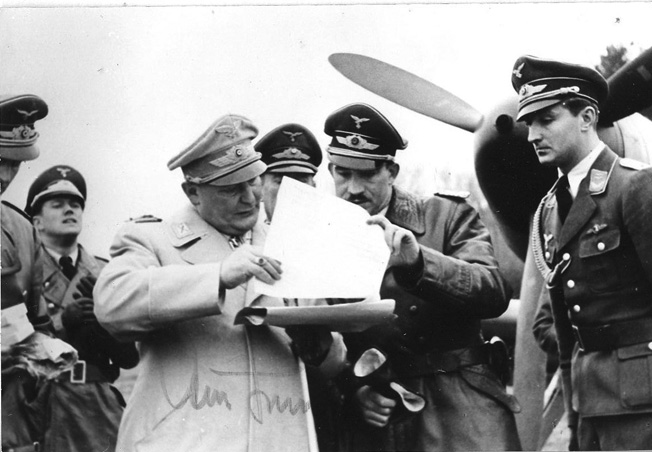
Hitler and Göring questioned the courage of the pilots and poured more money into the development of revenge weapons, such as the V-1 buzz bomb and V-2 rocket, which they insisted would force the weary British to sue for peace. Galland’s frustration soared. At one stormy meeting with the blustering Göring, he tore off his Knight’s Cross and tossed it on the table. “The atmosphere was tense and still,” Galland reported. The Reichsmarshal was stunned but did nothing, and Galland refused to wear his decorations for the next six months.
Despite his tireless efforts, Galland was blamed for the collapse of the German fighter arm. Göring accused him of disloyalty and introducing unsound tactics, and Galland fell further out of favor with him and Hitler, both of whom refused to comprehend Germany’s inevitable defeat. Its best-known fighter ace became the scapegoat for the Luftwaffe’s failures.
Adolf Galland’s Capture
Galland persevered as general of fighters until January 1945, when Göring sent him on leave, virtually relieving him. But the gallant ace—demoted, facing possible execution, and placed under house arrest in the Harz Mountains—was allowed by Hitler to return to combat duty. He was given command of the new Jagdverband 44, an elite “squadron of squadrons” equipped with Me-262 twin-turbojet fighters based at Munich-Riem. Its crack pilots included 10 holders of the Knight’s Cross. Galland thus became the first man in history to command a jet fighter squadron.
The Me-262 mounted four 30mm cannon, had a maximum speed of 540 miles an hour, and could reach an altitude of 30,000 feet in seven minutes. It could far outstrip the P-51 and challenge the speedy Mosquito, but it could fly for only an hour. The Luftwaffe jets played havoc with U.S. Eighth Force B-17 groups for three months, and Galland himself scored seven kills. But JV-44’s losses were heavy. The Me-262s had come off the assembly lines too late and in too few numbers to affect the course of the air war. Galland’s score of victories reached 104 before he was put out of action two weeks before the end of the European war.
On April 26, 1945, he led six Me-262s in a head-on attack against a formation of American Martin B-26 Marauder medium bombers. He downed one of the planes over the River Danube, but his jet was badly damaged and forced down by escorting P-51s. Galland crashlanded in a bomb crater near Munich, badly injuring his knee. He was captured at an air base near Salzburg, Austria, by troops of the U.S. Seventh Army in May.
After being held in a prison camp for two years, Galland became a successful aviation consultant. Married three times, he spent six years as a technical adviser to the Argentine Air Force, returned to Germany in 1954, and worked as an industrial consultant in Dusseldorf. For a time, Galland was considered a likely candidate to head the new West German Air Force. His autobiography, The First and the Last, featured a foreword by his famed RAF adversary, Group Captain Bader.
He died on February 9, 1996, survived by his third wife, Heidi, and a son and daughter by his second wife.
Author Michael D. Hull is a frequent contributor to WWII History. He resides in Enfield, Connecticut.
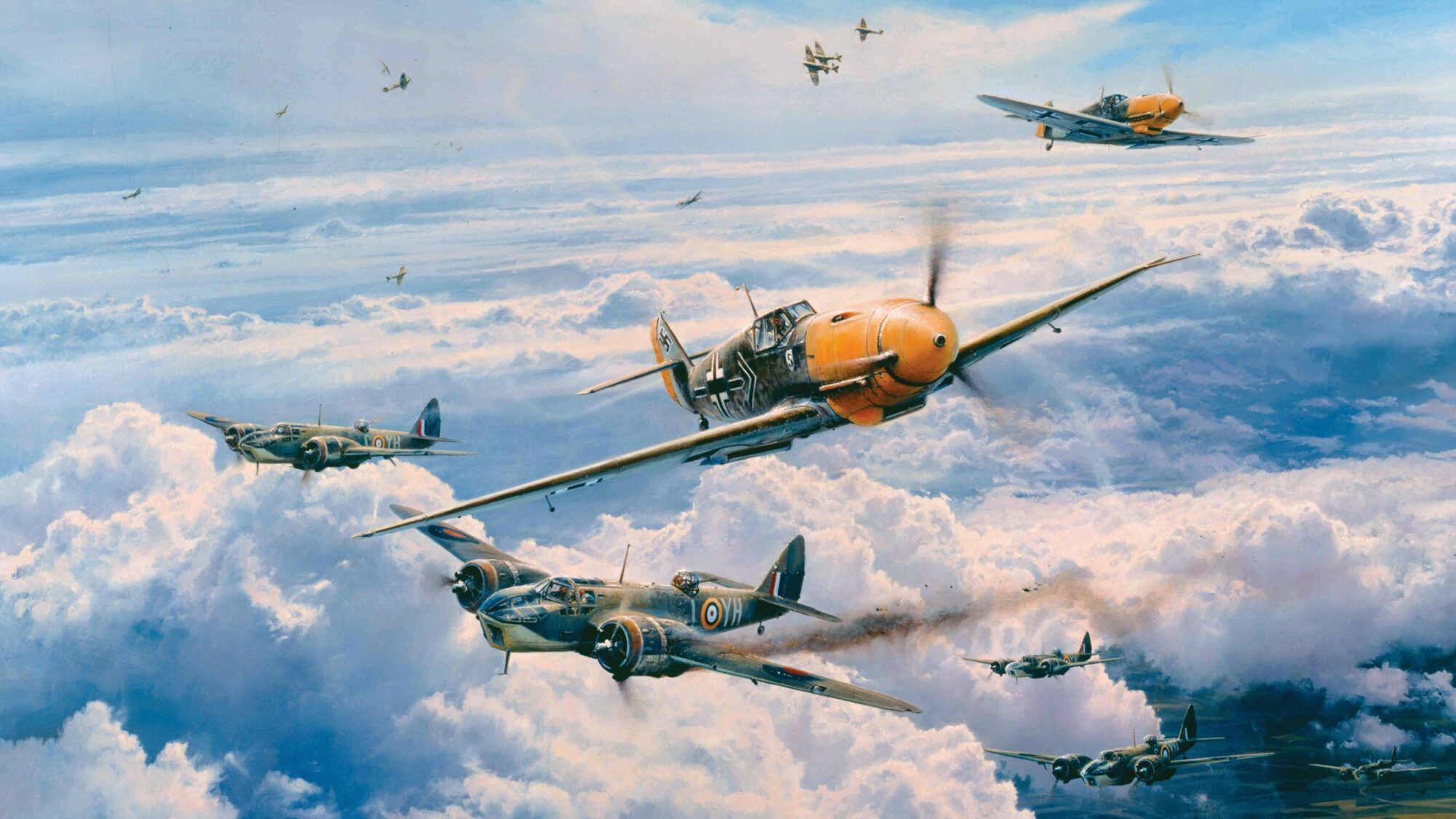
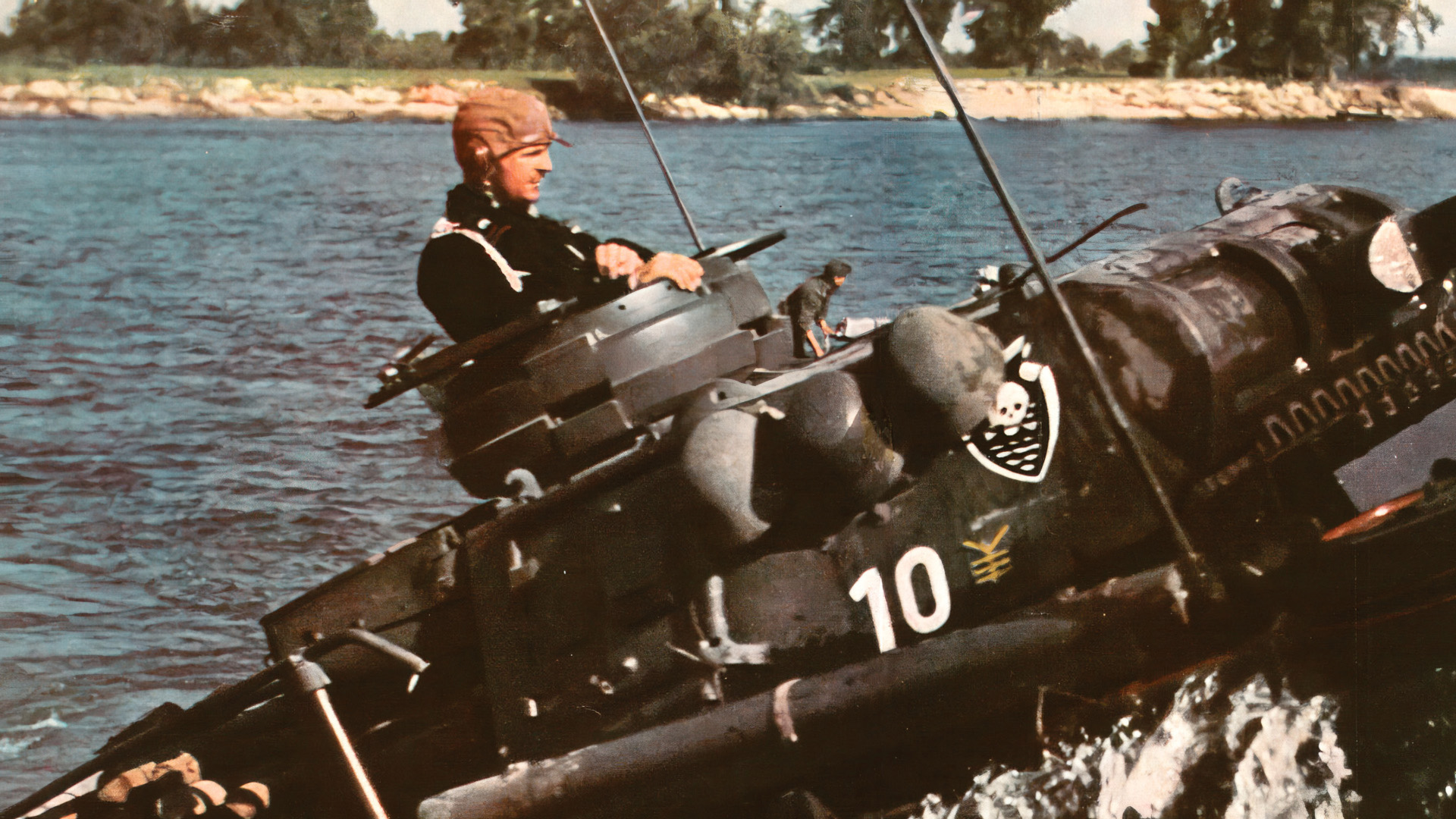
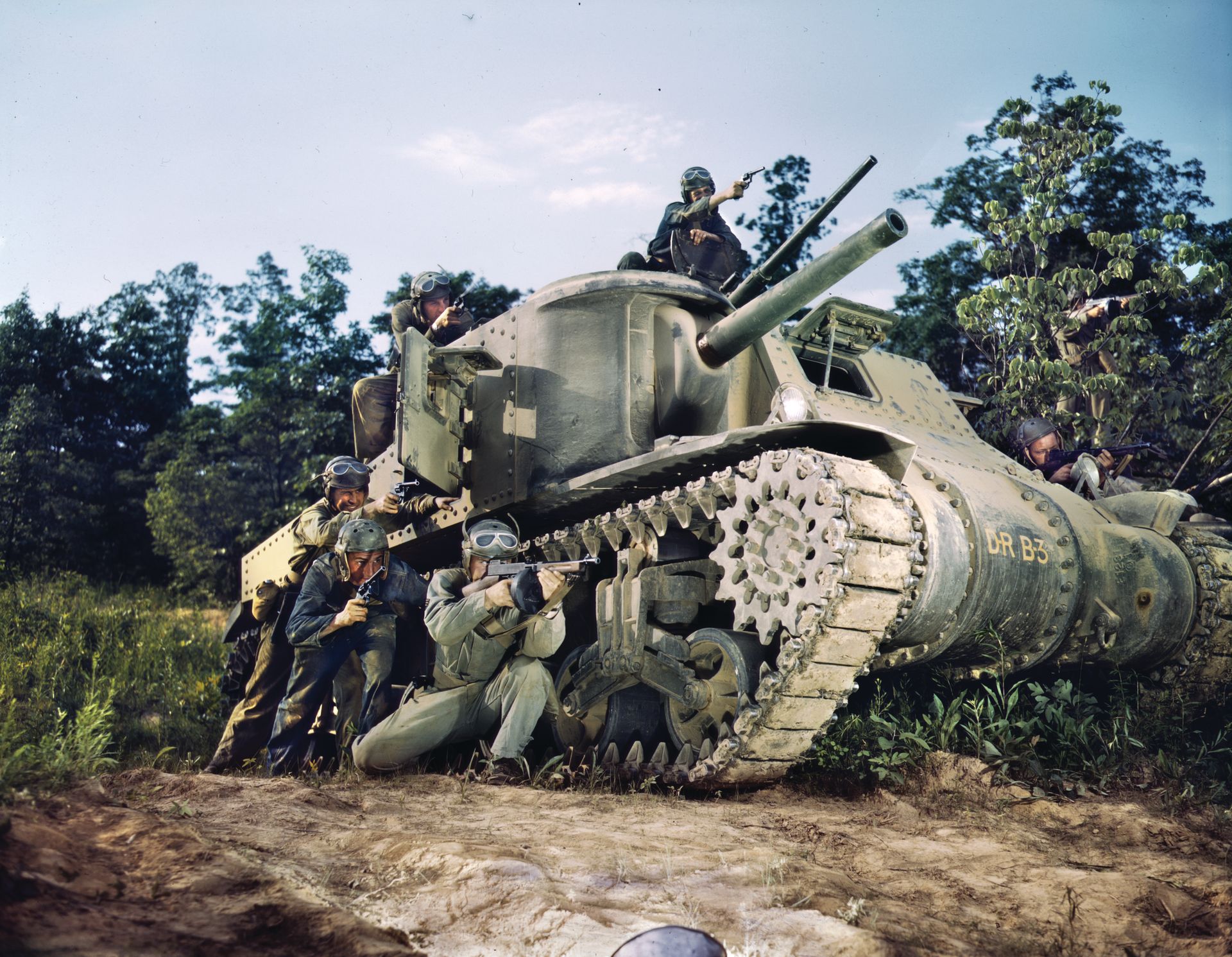
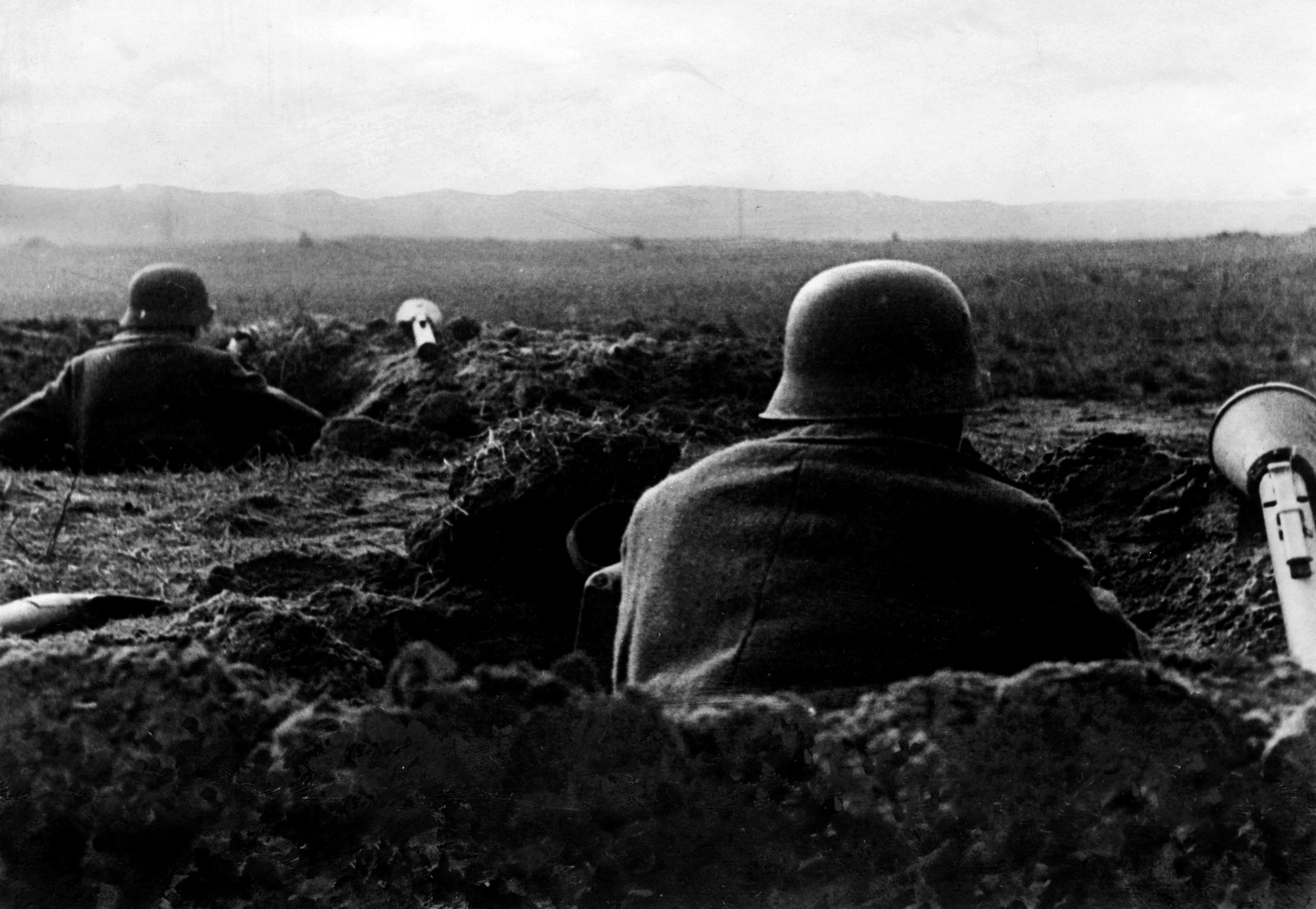

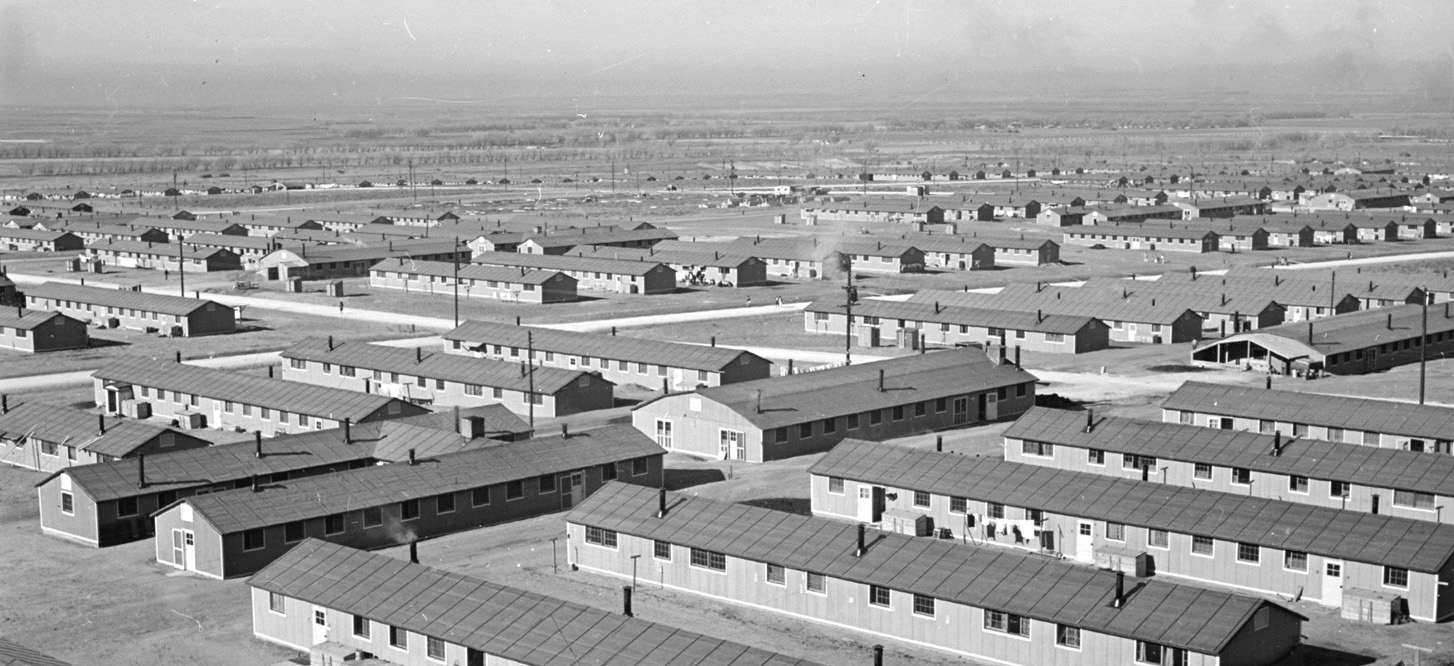
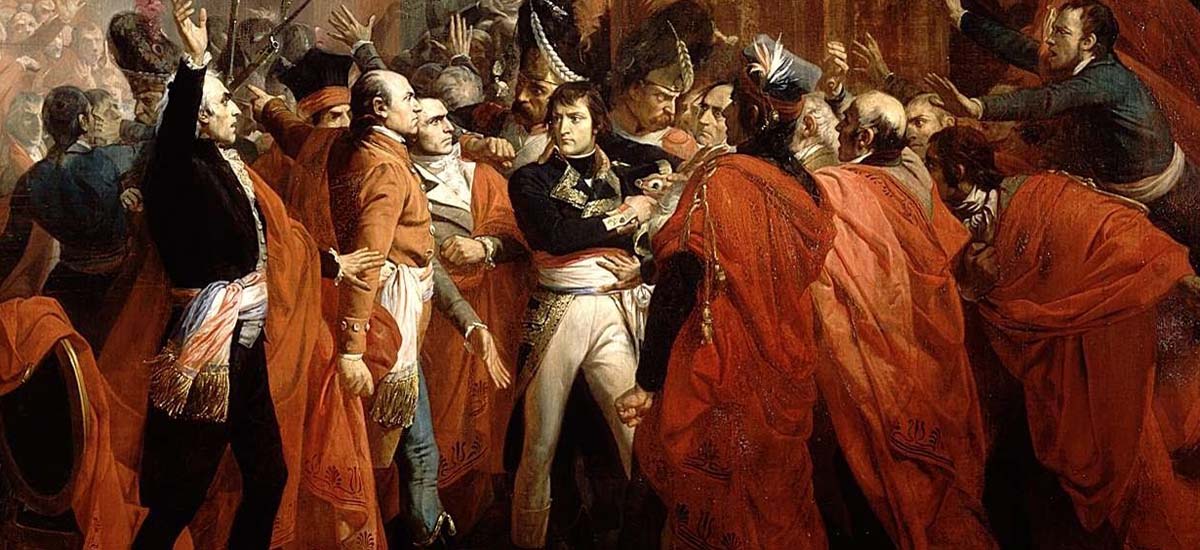
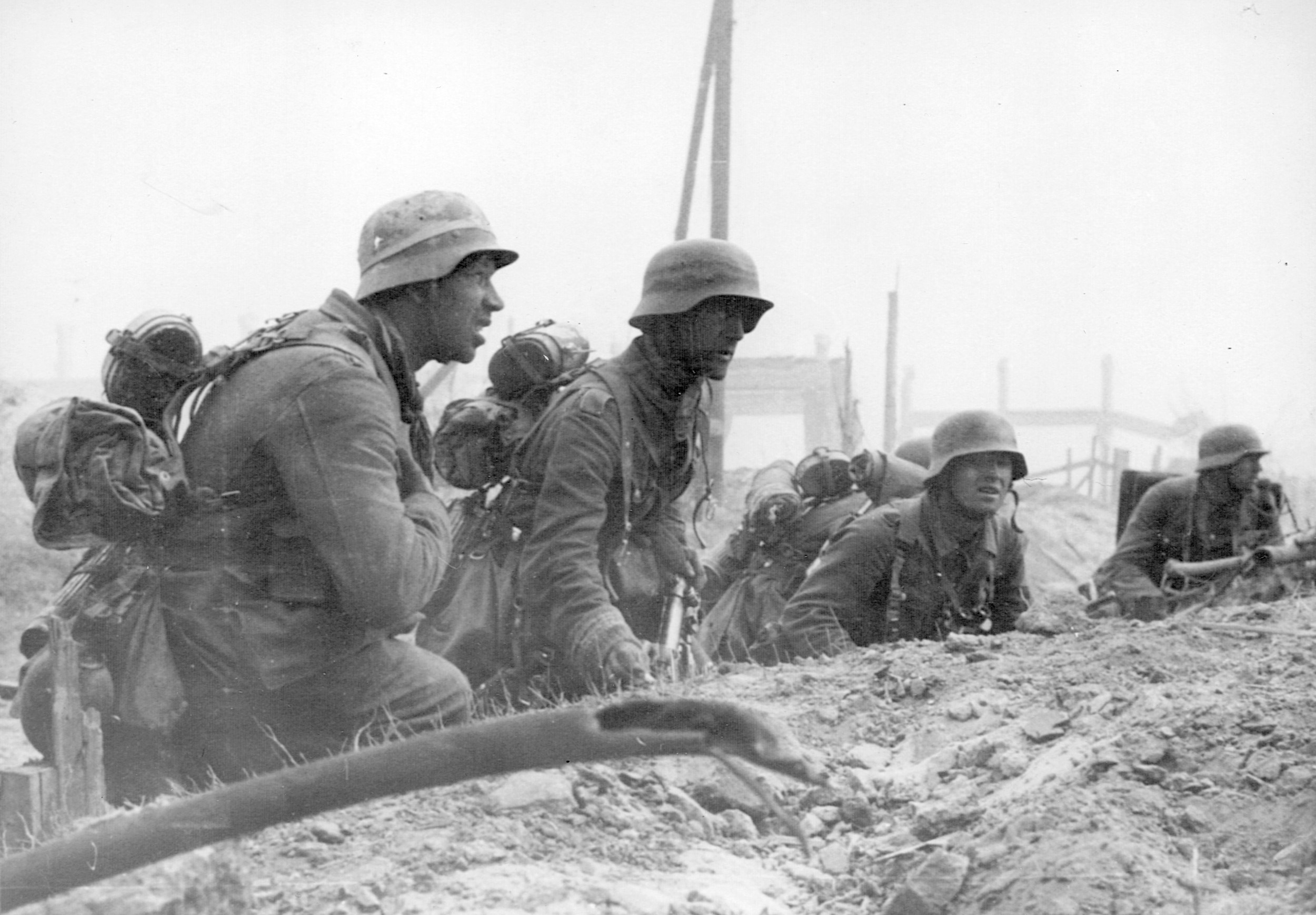
Join The Conversation
Comments
View All Comments